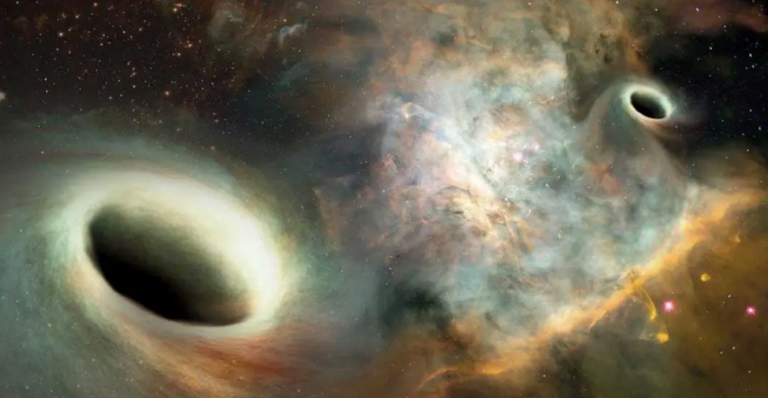There is a possibility that two or maybe even three black holes are located approximately 150 light years away from Earth.
Astronomers speculate that the nearest black holes to Earth might be concealed within the Hyades Cluster, located approximately 150 light-years from our sun.
Indeed, these enigmatic black holes could have been expelled from the densely populated cluster of stars millions of years ago, adrift in the vast expanse of our galaxy. Nonetheless, their proximity would surpass that of the previously identified nearest black hole to Earth by a factor of ten.
The researchers propose that if these black holes were expelled from the Hyades during its earlier stages of development, around 625 million years ago, the cluster would not have matured enough to erase any evidence of their existence.
Even if they were hypothetically exiled from the Hyades, the scientists explain that these black holes would still remain the closest to Earth, as simulations suggest that they would continue to be in close proximity to the cluster.
Previously, the closest black holes to Earth were Gaia BH1 and Gaia BH2, which were discovered through Gaia’s observations earlier this year. Gaia BH1 is located 1,560 light-years away from Earth, while Gaia BH2 is approximately 3,800 light-years away. Despite being relatively close in astronomical terms, both black holes are still over ten and twenty times farther away than the Hyades cluster and its presumed pair or trio of black holes.
Both this recent study and the previous identification of Gaia BH1 and BH2 highlight the significant impact of Gaia, launched in 2013, on the field of astronomy. The space telescope’s precise measurements allow astronomers to study the positions and movements of individual stars within clusters like the Hyades for the first time.
Gaia’s ability to accurately track the positions and motions of billions of stars against the backdrop of the celestial sphere enables researchers to uncover the gravitational influences exerted on these stars, even by hidden entities like small stellar mass black holes.
“This observation deepens our understanding of how the presence of black holes shapes the evolution of star clusters,” commented Mark Gieles, a research author and scientist from the University of Barcelona. “Furthermore, these findings provide us with insights into the distribution of these mysterious entities throughout our galaxy.”
Do not forget to share your opinion with us to provide you with the best posts !





0 Comments